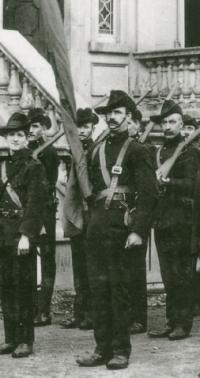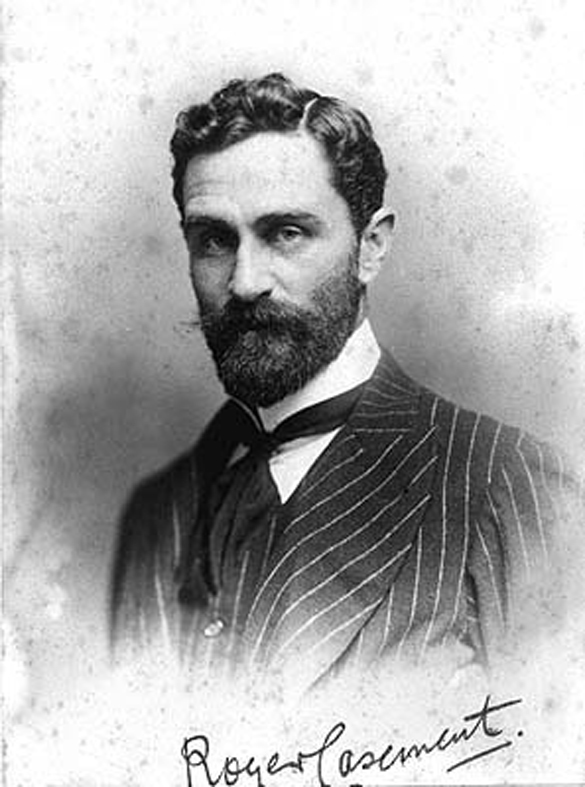The Ballymoney meeting, 24 October 1913
Published in 1913, Decade of Centenaries, Home Rule Crisis, Revolutionary Period 1912-23 On 24 October 1913 Jack White organised a pro-Home Rule rally in Ballymoney, Co. Antrim, aimed at rallying Ulster Protestants who supported Home Rule. While support for nationalism and unionism was usually intertwined with confessional affiliation – nationalists tended to be Catholic, unionists tended to be Protestant – there had always been a small minority of Protestants in favour of Home Rule (indeed, Isaac Butt and Charles Stewart Parnell were both members of the Church of Ireland).
On 24 October 1913 Jack White organised a pro-Home Rule rally in Ballymoney, Co. Antrim, aimed at rallying Ulster Protestants who supported Home Rule. While support for nationalism and unionism was usually intertwined with confessional affiliation – nationalists tended to be Catholic, unionists tended to be Protestant – there had always been a small minority of Protestants in favour of Home Rule (indeed, Isaac Butt and Charles Stewart Parnell were both members of the Church of Ireland).
White himself was born in Ballymena into an Anglo-Irish military family, and was a decorated veteran of the Boer War. He had led something of a bohemian existence since then, and within a few weeks of the Ballymoney meeting was to be involved in the foundation of the Irish Citizen Army in Dublin. He organized the meeting to (as the posters put it), ‘protest against the lawless policy of Carsonism’. It was to consider resolutions stating that ‘this meeting of Protestant inhabitants of Ballymoney and district protests against the claim of Sir Edward Carson and the self-constituted Provisional Government of Ulster to represent the Protestant community of north-east Ulster in the policy they have announced of lawless resistance to the will of the parliament of Great Britain and Ireland’, and furthermore, that ‘this meeting contests the narrow claim that differences of creed neceasarily separate Irish men and women into hostile camps’ (Freeman’s Journal, 16 Oct. 1913).
 Perhaps 400 people attended the meeting in Ballymoney Town Hall, which was addressed by Reverend J.B. Armour; John Dinsmore (a local mill owner who had previously accused local ‘linen lords’ of exploiting sectarianism to deflect demands for better pay and conditions); R.G. Glendinning, the Liberal MP for North Antrim; Sir Roger Casement (a native of Antrim), Alice Stopford-Green; and White himself, who read out an alternative covenant that expressed support for Home Rule, unlike its far more popular namesake. Casement gave a speech in which he asked ‘why are Ulstermen today drilling and arming?…the enemy they are being led against is no enemy at all; in very truth he is their own brother’. While acknowledging the socio-economic problems (such as emigration) that seemed to pose a compelling argument against Home Rule, Casement went on to issue a plea for national unity, arguing that the natural stance for Ulster to take was ‘not to bury its talent in the ground’ but instead, ‘with goodwill in the heart and instruction in the hand…to guide and help and sustain those, less instructed and possibly less capable other Irishmen’.
Perhaps 400 people attended the meeting in Ballymoney Town Hall, which was addressed by Reverend J.B. Armour; John Dinsmore (a local mill owner who had previously accused local ‘linen lords’ of exploiting sectarianism to deflect demands for better pay and conditions); R.G. Glendinning, the Liberal MP for North Antrim; Sir Roger Casement (a native of Antrim), Alice Stopford-Green; and White himself, who read out an alternative covenant that expressed support for Home Rule, unlike its far more popular namesake. Casement gave a speech in which he asked ‘why are Ulstermen today drilling and arming?…the enemy they are being led against is no enemy at all; in very truth he is their own brother’. While acknowledging the socio-economic problems (such as emigration) that seemed to pose a compelling argument against Home Rule, Casement went on to issue a plea for national unity, arguing that the natural stance for Ulster to take was ‘not to bury its talent in the ground’ but instead, ‘with goodwill in the heart and instruction in the hand…to guide and help and sustain those, less instructed and possibly less capable other Irishmen’.
The speeches were applauded by an audience of approximately 400 people. The meeting was noted with approval by the Home Rule MP T.P. O’Connor who, at a speech in Reading a few days later, claimed how a meeting ‘called by Protestants, attended only by Protestants, [and] addressed only by Protestants…denounced the madness of separating their province from their nation’ (Freeman’s Journal, 26 Oct. 1913). O’Connor may have overlooked the vaguely condescending aspects of Casement’s argument as he did so, but the arguments out forth by Casement ans the other speakers ultimately fell on deaf ears. Opposition to Home Rule remained the dominant political theme in Protestant Ulster in the years prior to the Great War. What the Ballymoney meeting suggests, however, is that political opinion within Protestant Ulster was perhaps more complex and nuanced than it is often assumed to have been.
Further reading:
Philip Orr, New perspectives: politics, religion and conflict in mid-Antrim, 1911-14 (Ballymena, 2011)
John Gibney
















